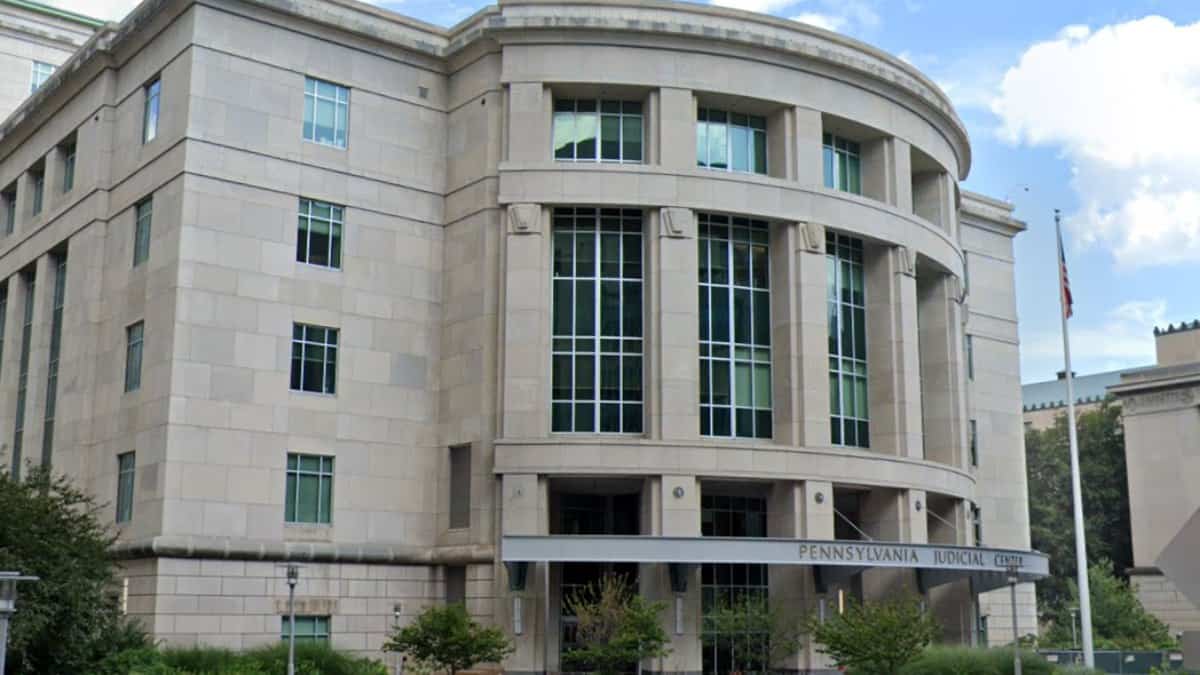
I arrived early at a community center in West Philadelphia, where a local legal-aid group had turned the space into an informal election-night hub: coffee urns in one corner, live vote projections in another.
When the call finally flashed across the screen, Justices Christine Donohue, Kevin Dougherty, and David Wecht retained, a modest but unmistakable cheer moved through the room.
For many Philadelphia voters and legal watchers, this was more than a routine judicial vote. It was a reaffirmation of the rule of law, a signal about the direction of the state’s courts, and a moment that carried weight for the city’s own justice system.
A Rare Spotlight on a Normally Quiet Contest
Retention elections for state supreme-court justices in Pennsylvania tend to fly under the radar. Voters are asked simply “Yes” or “No” on whether to keep a justice who has served the prior term. In decades past, these have been low-profile affairs with minimal campaigning. But this year was different. For the first time in years, the stakes were elevated, and attention was focused firmly on what was once viewed as a technical vote.
In Philadelphia, voters I spoke to said they’d received frequent mailers, digital ads, and text messages urging support for the justices or warning what would happen if they were ousted. One South Philadelphia resident told me, “I got mailers every other day. I didn’t even know there was a retention vote until this year.”
The three justices, Donohue, Dougherty, and Wecht, were first elected as Democrats in 2015. Their retention preserves the court’s Democratic majority and maintains stability in a chamber that has issued key rulings on voting rights, redistricting, and other high‐stakes issues.
The Philadelphia Angle: What the Result Means Locally
As I walked through the lobby of a Philadelphia public-interest law firm this afternoon, staff and attorneys emphasized that the outcome affects local courts, school funding, and both criminal and civil justice reform. One attorney explained that decisions by the state Supreme Court often ripple down from Harrisburg, affecting Philadelphia and county courts across the state.
For Philadelphia voters, who may not follow the state Supreme Court closely, this retention vote matters for several reasons:
- Philadelphia is a major population center and plays a key role in statewide judicial and electoral outcomes.
- Many key state Supreme Court cases in recent years have originated in or affected cities like Philadelphia, including school funding lawsuits, redistricting, mail-in voting, and state constitutional rights.
- The retention vote indicates to judicial candidates and interest groups that voters are paying attention, even in technical judicial elections.
Local civic-engagement groups in Philadelphia increased voter-education efforts this cycle, partly due to the Supreme Court’s broad influence and the higher profile of this contest.
One community organiser said they used the retention election to educate voters on how courts affect issues from property taxes and criminal records to school funding, not just who sits on the Supreme Court.
The Campaign Behind the Retention Vote
I dug into the campaign dynamics and spoke with several election-law observers and political operatives in Philadelphia. Here are key elements of how this campaign unfolded:
- Spending and outside involvement: While retention votes typically attract small budgets, this year’s race saw substantial spending—estimates exceed $15 million statewide. That level of funding drew national interest, reflecting how state courts are increasingly battlegrounds for big issues.
- Partisan overlay despite non-partisan label: Although justices are on the ballot simply as a “Yes” or “No” for retention (without party identification), the political forces behind them were unmistakable. Democrats supported retention as a measure of protecting rights. Republicans and aligned groups urged “No” votes, citing dissatisfaction with court decisions.
- Key issues at play: In Philadelphia and statewide, the justices participated in rulings that struck down the state’s congressional map as an unconstitutional gerrymander, upheld mail-in ballot rules, and addressed abortion-rights cases. Those decisions became campaign fodder: supporters argued retaining the justices preserved fairness; opponents said they represented unchecked judicial activism.
- Voter engagement in Philadelphia: Some voters I spoke with said they hadn’t initially planned to vote on the retention question but decided to after seeing signage or information at polling sites. This higher-profile outreach, including efforts by local law schools, bar associations, and civic groups, likely contributed to increased attention on the retention question compared to prior years.
- Narrative of stability vs. change: One theme that resonated in Philadelphia: continuity. In my interviews, many voters said they wanted stability in the courts, particularly amid national political turbulence. As one West Philly voter put it: “We have enough chaotic politics every day. I don’t want our courts flipping because of some fight halfway across the country.”
The Outcome & Numbers
According to unofficial results, voters answered “Yes” to retain all three justices, with margins that were strong and largely uniform across counties, including in Philadelphia. The projected results indicate the court’s composition will remain five Democratic-elected justices and two Republicans, preserving the Democratic-elected majority.
According to Philadelphia News, the retention vote mirrored broader statewide trends. Local election officials at the community centre told me the ‘Yes’ side prevailed, with many showing margins above 60 percent, though I didn’t have full county-by-county breakdowns. Analysts reported that the ‘Yes’ side remained strong in suburban counties around Philadelphia, although margins were narrower in certain precincts.
Why the Result Matters for Philadelphia and Beyond
This retention result carries several important implications for Philadelphia and beyond:
- Preserving the court’s role in Pennsylvania: The state often plays a key role in national politics, and its supreme court has a history of deciding important election and governance issues. Maintaining the current balance ensures continuity in how future disputes are handled.
- Impact on local and regional justice issues: Decisions by the state supreme court affect Philadelphia on issues such as school funding, municipal finance, criminal justice reform, housing, and voting rights. A change in the court’s composition could ripple through city policy and litigation. For example, a ruling that declared Pennsylvania’s school funding system unconstitutional earlier this decade directly affected Philadelphia.
- Message to local judicial and political actors: The result shows that Philadelphia voters pay attention to judicial races, even those marked as ‘retention.’ Local judges, bar associations, campaigners, and community groups took note, which could lead to more active engagement and scrutiny in future judicial elections.
- Strategic boost for Pennsylvania Democrats in Philadelphia: Although the election is officially non-partisan, the outcome aligned with Democratic interests. Local Democratic leaders can see this as a win for their coalition and as guidance for strategy in 2026. The result indicates that voters continue to support progressive reformers in the legal system.
Challenges & Questions Ahead
Even with this strong outcome, Philadelphia observers still have several questions:
- Will the court change its posture? Retention doesn’t guarantee major shifts, but justices may feel more pressure. Legal observers in Philadelphia suggest they now face higher expectations for performance, transparency, and public accountability.
- Will outside spending continue to escalate? The more than $15 million spent in this cycle suggests judicial elections could become even costlier and more competitive. Philadelphia watchdogs are concerned about the influence of national donors on local courts.
- How will this affect local litigation? Philadelphia lawyers will watch how the court rules on municipal authority, rental housing, policing powers, and election law. Some wonder whether maintaining the current court will lead to fewer surprises or more activist rulings.
- What about judicial diversity and access? Community groups in Philadelphia remain concerned about the representation of women, people of color, and lower-income litigants. Retention kept incumbents in place but didn’t create new opportunities for diversity on the bench.
How will voter education evolve? Many Philadelphia voters hadn’t previously focused on judicial retention. Civic groups plan to use this momentum to enhance long-term voter understanding of the courts.
My Personal Reflection From the Field
As I walked out of a community centre in West Philadelphia that afternoon, I noticed the contrast between the simple wording of the ballot question and the complex debate behind it. One line asked: “Shall Christine Donohue be retained for an additional term?” Behind that line were millions of dollars in campaign spending and partisan pressure.
I paused to speak with a young law-school graduate volunteering at the centre. She said, “I work in public interest, and I’ve watched cases go from our city courts up to Harrisburg. This outcome matters for the clients I serve in Philly who don’t always have big voices.” That sentiment echoed what I heard in North Philadelphia from a community organiser: “People at ground level might not realise their vote on a judge matters. Tonight shows it does.”
Earlier in the evening, before results were final, I visited a polling place in a suburban township near Philadelphia and asked a voter why she was paying attention to the judicial retention question. She said, “I usually skip it. But I got an email explaining that this affects our mail-in vote rules and school funding, so I thought I should go ahead and vote.” I was struck by how a small nudge of information changed her awareness and prompted her to act.
What to Watch Next in Philadelphia & Pennsylvania
In the coming months, I’ll be paying attention to several flashpoints that link back to this retention outcome:
- How the Pennsylvania Supreme Court handles any upcoming election-law challenges ahead of the 2026 midterms. The justices retained tonight may be called on to adjudicate significant disputes.
- The pattern of judicial campaign spending in the Philadelphia region. Will local bar associations and civic groups mobilise? Will there be state-level transparency reforms?
- Trends in local judicial elections, especially in Philadelphia County and the surrounding suburbs. Will voter turnout for judges increase? Will campaigns become more visible?
- The pipeline of judicial talent in Philadelphia. With this retention settled, talk now shifts to who’ll be the next challengers, replacements, and reform-minded candidates in the city and region.
- Whether the result spurs legal and civic education initiatives in Philadelphia aimed at bridging the gap between voters and courts.
A Subtle but Significant Win for Pennsylvania’s Judiciary
For Philadelphia voters, the retention of three Pennsylvania Supreme Court justices was more than a routine ballot decision, it was a reminder that the judiciary quietly shapes daily life as much as any headline-grabbing office. Courts may seem distant, but their rulings define the boundaries of rights, policies, and justice.
Throughout the day, I heard a blend of relief and renewed attention. Relief that the court’s direction will remain steady. Renewed attention because more voters now recognize that judicial elections are not side issues but central pieces of governance.
In a city captivated by mayoral and district attorney races, this retention vote cast a rare spotlight on an institution that rarely draws crowds but consistently shapes outcomes.
